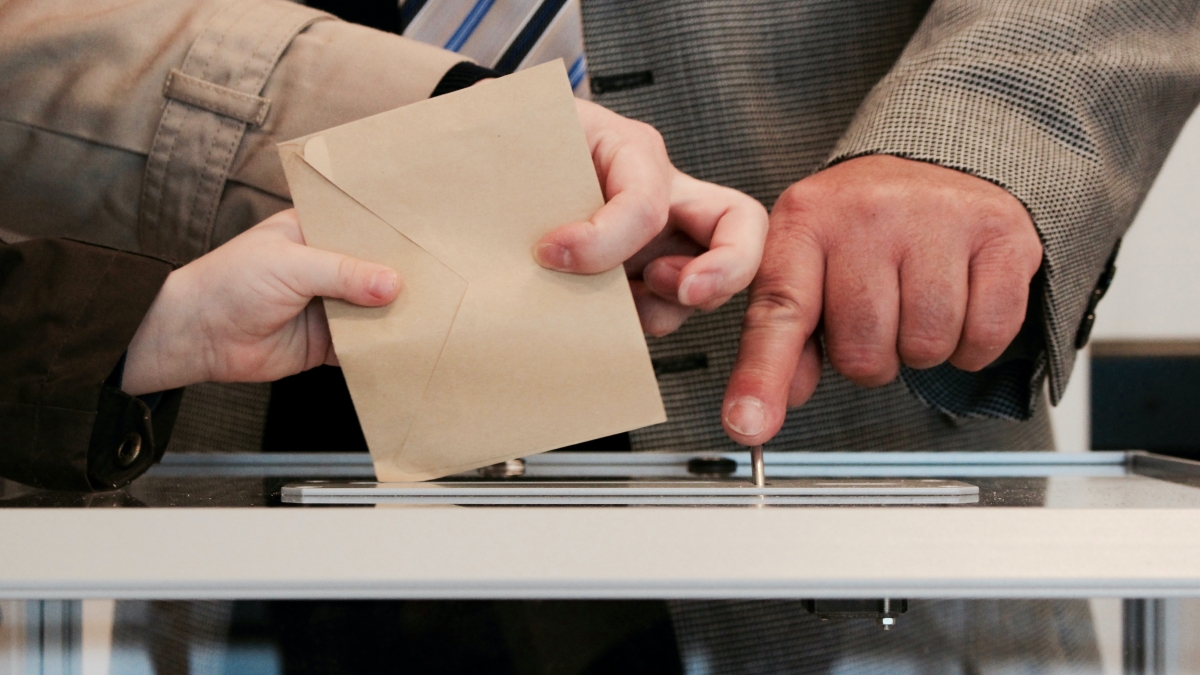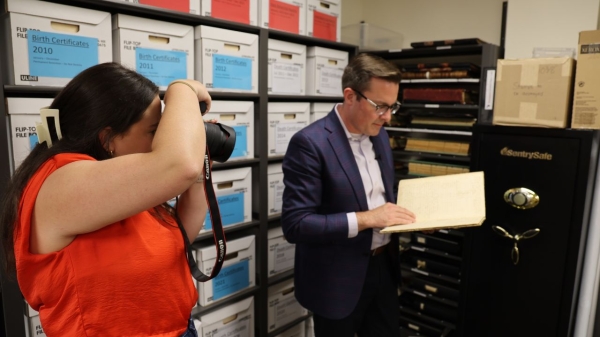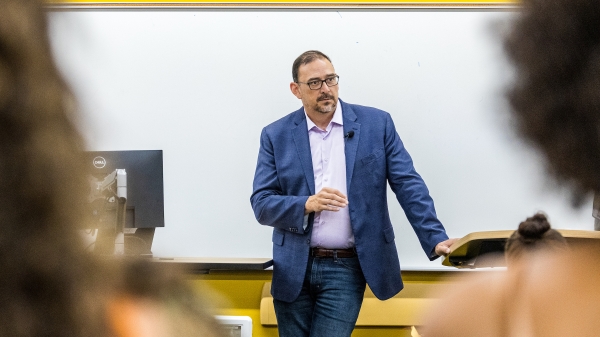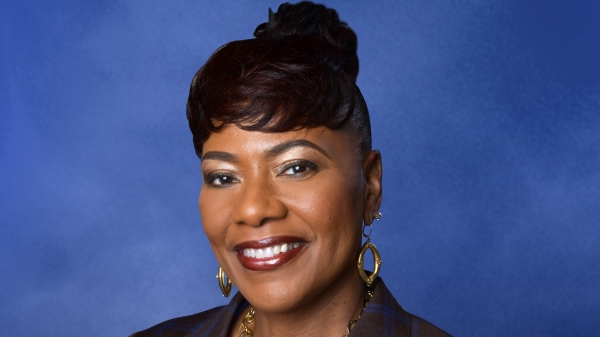Elections make the world go ‘round?

Photo courtesy of Arnaud Jaegers via unsplash.com.
An American presidential election happens every four years and is the only election race where candidates are not elected by popular vote alone. After a series of primaries and caucuses leading up to a general election, the people narrow down the candidates to vote for on Election Day.
The candidates for president and vice president are ultimately decided upon by the Electoral College, which was established in Article II, Section I of the Constitution. It is made up of electors from each state representing as many representatives and senators as their state. So when citizens vote for a presidential candidate on Nov. 3, they are actually voting for the slate of electors vowing to cast their vote for that ticket in the Electoral College.
This election process is well known to most American citizens and is the basis for the country’s democracy, but how does it compare to other election processes across the world? A few historians from the School of Historical, Philosophical and Religious Studies gave insight to elections from different countries.
New Zealand
New Zealand is a young state, established in 1852 after Britain let the settlers set up a small self-government that excluded the native Māori people. However, despite being a young country, it is also the oldest democracy measured by modern standards of universal suffrage.
“By the 1860s the Māori population was a minority, and in 1867 the settler government established four Māori seats in parliament, enfranchising some Māori men,” said Tobias Harper, assistant professor of history. “Full male suffrage was introduced in 1879. New Zealand became the first modern democracy in 1893 when it introduced full adult suffrage through the enfranchisement of women, decades before the USA, Britain or much of Europe.”
From that point up until 1993, New Zealand parliament was elected using variants of the “First Past the Post” system inherited from Britain, which selected 99 members through local elections where the representative was chosen by winning a plurality of votes.
“This system disadvantaged small parties and could lead to large imbalances between the national popular vote and the actual composition of parliament,” Harper said. “In 1992 and 1993 the public voted in two referenda on the issue of electoral reform.”
The first referendum displayed a large majority of the voting public favored a change in system, but this was nonbinding. In the second referendum, which was binding, a smaller majority voted in favor of changing the system to “Mixed Member Proportional” (MMP), despite opposition from the two major political parties. In 1996, the first election with the new system was underway.
Using the MMP system, voters make two choices in national elections: for a party at the national level, and for a local representative in their electorate. The elections for their single house of parliament are held every three years.
The political parties elect a candidate for prime minister prior to the election, and whichever party holds the majority after the election has their candidate sworn in.
“Political parties receive representation in the 120-seat parliament proportional to their share of the first vote, provided that they won at least 5% of the national vote,” said Harper. “The second vote chooses a local representative; 71 of the 120 seats in parliament are taken by such representatives.”
This means that if a particular political party doesn’t receive at least 5% of the vote, they can still be represented in parliament if they have a popular enough politician.
“The remaining 49 seats are filled by ‘party lists,’ wherein each party ranks its politicians and fills in its proportional share of parliamentary seats with the highest-ranking individuals who did not win an electoral seat,” Harper said. “This produces a parliament that replicates the share of the national vote that each party won, while also ensuring some local representation. In practice this also means that most governments are coalitions between two or more parties, because one single party can seldom win the near majority required to receive 61 seats.”
New Zealand’s recent election on Oct. 17 was one for the history books. When a political party holds the majority in the New Zealand parliament, they form a coalition with another party to govern. But this year was the first year since the MMP election system was established that a political party won enough of the popular vote that they are not required to form a coalition.
“It remains to be seen whether the Jacinda Ardern-led Labour Party will choose to govern alone,” Harper said. “Ardern's last government relied on the New Zealand First Party, a populist party, and the Green Party as coalition partners. The New Zealand First Party is now out of parliament following corruption scandals and a steep decline in support. The Greens are still in parliament with a significant share of the vote, but Labour doesn't need them to govern.”
Germany
Like New Zealand, Germany also uses the MMP election system for their major elections. They began using the system after World War II when the country’s new constitutional system was written under the watchful eyes of the Allied Forces. Germany used the absolute-majority Two Round System prior to the war, but changed the system after to ensure no political party like the Nazi party could hold absolute power again.
“The result of such a proportional system is that no single party has a majority,” said Volker Benkert, assistant professor of history. “There are six parties represented in parliament. Of course there are lots more parties, there’s no shortage of people who want to form their own party, but in order to be represented in parliament you have to have more than 5% of the votes and that’s just a measure to make sure there aren’t 100 parties in parliament.”
West Germany formed the new system based on the Weimar Republic, which used a pure proportional representation system, and began using it in 1949 under the West German Constitution.
“What is interesting is at that moment, the West Germans did not try to copy the French, the British or the American model and if we had taken the American model we would have this presidential democracy with a really strong leader,” Benkert said. “A German chancellor is pretty powerful, but not as powerful as the American president as far as the powers vested in that office.”
The vice chancellor is often someone from the coalition partner in parliament and will usually hold the office of secretary of state or, sometimes, secretary of the interior. Along with a chancellor, Germany has a federal president of the Federal Republic of Germany, but the title is much more ceremonial and is presented as more of a figurehead except in times of crisis.
“A German chancellor is not someone who can make sweeping reform, but is someone who has to very cautiously work to get majorities in her own party, a coalition partner in parliament, and often roping in votes from the opposition so it’s very consensus-driven,” Benkert said. “There’s a lot of negotiation going on, but at the same time it’s not a very fast process.”
Mexico
Unlike the U.S., Mexico holds its presidential elections every six years and presidents can only be elected once. The winner is determined by universal popular vote and has been this way since 1920, with the addition of women in 1953. However, the history is much more complicated than that.
“The issue of a peaceful transition of presidential/political power has plagued Mexico since independence from Spain in 1821,” said Alexander Aviña, associate professor of history. “After the Mexican Revolution of 1910, a mass peasant revolution, the victorious revolutionaries devised a solution to this problem. They created a single broad-based political party, eventually called the Institutional Revolutionary Party (PRI) in 1946, within which prominent political, military and social leaders could peacefully negotiate the transfer of power.”
The result of this single-party rule led to authoritarian takeover, which used a mix of co-optation and violence to hold on to presidential power. Although presidential elections still took place every six years, the candidates from the PRI party always emerged victorious. The real race for power was within the party itself.
“The usual presidential candidate had worked in the previous presidential cabinet, often as minister of the interior,” Aviña said. “The outgoing president had enormous power in deciding his successor. Indeed the process of choosing the next president was termed ‘el dedazo,’ i.e. the president pointing his finger to his successor.”
When faced with real opposition, the PRI would not hesitate to use violence, intimidation, co-optation and vote-rigging. So it was in the 1988 election, when the opposition candidate Cuauhtémoc Cárdenas was winning — before the computers counting the votes crashed only to have the PRI candidate Carlos Salinas de Gortari win after the computers gained back power.
“By the late 1990s, the PRI leadership realized that elections needed to have a democratic pretense,” Aviña said. “The presidential elections of 2000, in which the center-right candidate Vicente Fox won, marked the end of PRI hegemony and the possibility of a — really slow — democratic transition in Mexico."
In the recent 2018 election, another first took place in Mexico when Andrés Manuel López Obrador was elected. It was the first time a center-left candidate claimed victory.
“Since 2000, with the exception of the shady 2006 election, presidential elections in Mexico have generally followed constitutional rules and procedures,” Aviña said.
More Law, journalism and politics

ASU's Carnegie-Knight News21 project examines the state of American democracy
In the latest project of Carnegie-Knight News21, a national reporting initiative and fellowship headquartered at Arizona State…

Arizona secretary of state encourages students to vote
Arizona Secretary of State Adrian Fontes looked right and left, taking in the more than 100 students who gathered to hear him…

Peace advocate Bernice A. King to speak at ASU in October
Bernice A. King is committed to creating a more peaceful, just and humane world through nonviolent social change.“We cannot…